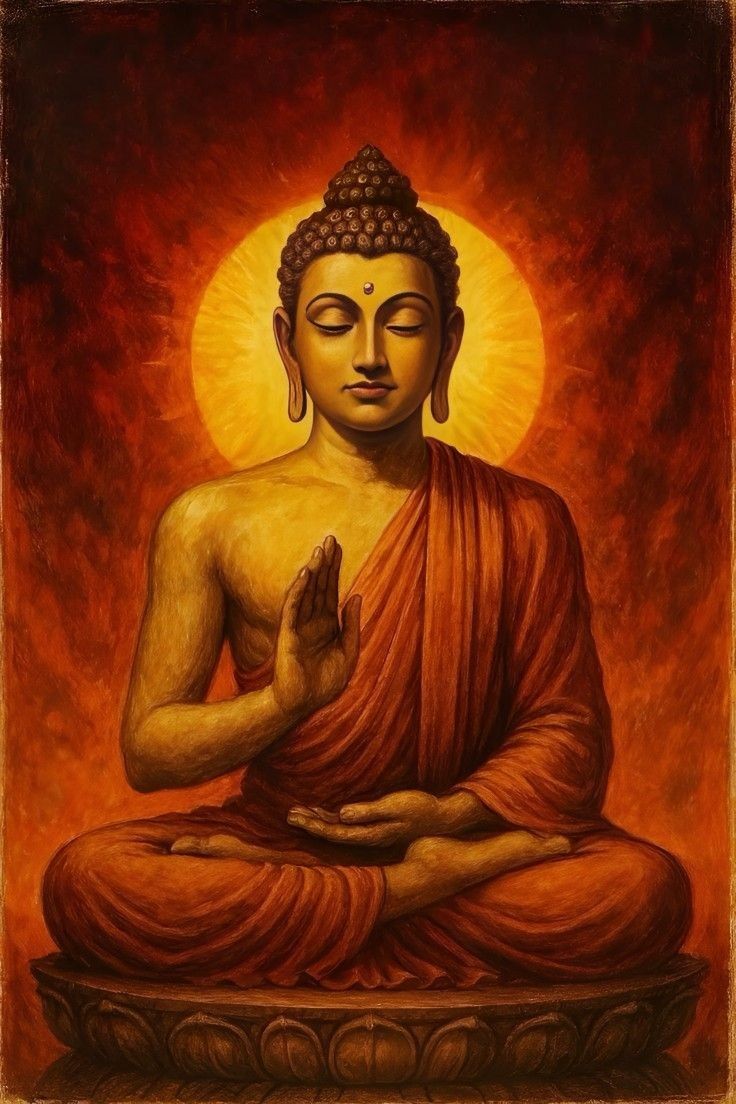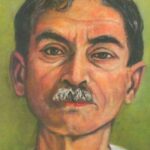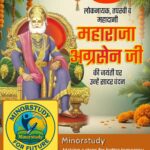7 Powerful Truths About Siddhartha Gautama That Will Transform Your Life
Siddhartha Gautama, widely known as Gautama Buddha, is one of the most revered spiritual leaders and philosophers in world history. His teachings have not only shaped Buddhism but also influenced countless lives across religions, philosophies, and centuries. He is a symbol of inner awakening, peace, and ultimate liberation from suffering.
- 🧘♂️ Who Was Siddhartha Gautama?
- 📜 Historical Timeline of Siddhartha Gautama
- 🔑 7 Transformational Facts About Siddhartha Gautama
- 1. He Was Not a God, But a Human Who Awakened
- 2. He Left a Royal Life to Understand Suffering
- 3. He Practiced Extreme Austerity Before Finding the Middle Path
- 4. His First Sermon Was the “Dhammacakkappavattana Sutta”
- 5. He Empowered All, Regardless of Caste or Gender
- 6. He Taught Nonviolence and Mindfulness
- 7. His Teachings Are More Relevant Today Than Ever
- 📚 Core Teachings of Gautama Buddha
- 🙏 Global Observance and Celebrations
- 💡 Importance in Our Daily Life
- 🤔 FAQs About Siddhartha Gautama
- Q1. Was Siddhartha Gautama a real historical figure?
- Q2. Is Buddhism a religion or philosophy?
- Q3. Why did he leave his family?
- Q4. Is Buddha worshipped as a god?
- Q5. What is Nirvana?
- 🌟 Wishing Siddhartha Gautama Jayanti (Buddha Purnima)
- 🌍 Siddhartha Gautama’s Impact on Society
- 🔚 Conclusion: Why Siddhartha Gautama Matters More Than Ever
This human-friendly article delves into his history, important facts, timeline, frequently asked questions (FAQs), his significance in daily life, his observance around the world, and his lasting societal impact — all written with the warmth and wisdom he once shared.
🧘♂️ Who Was Siddhartha Gautama?
Name: Siddhartha Gautama
Titles: Buddha (“The Enlightened One”), Shakyamuni (“Sage of the Shakyas”)
Birth: Circa 563 BCE
Place of Birth: Lumbini (present-day Nepal)
Parents: King Suddhodana (father), Queen Maya (mother)
Wife: Yasodhara
Son: Rahula
Death (Mahaparinirvana): Circa 483 BCE at Kushinagar, India
Born a prince, Siddhartha Gautama gave up a life of royal comfort to seek the truth about suffering and existence. After years of meditation, he attained enlightenment under the Bodhi Tree in Bodh Gaya, India, and became Gautama Buddha.
📜 Historical Timeline of Siddhartha Gautama
| Year | Event |
|---|---|
| 563 BCE | Born in Lumbini into a royal family |
| 547 BCE | Marries Yasodhara and has a son, Rahula |
| 534 BCE | Renounces royal life at age 29 to seek truth |
| 528 BCE | Attains enlightenment at Bodh Gaya under the Bodhi Tree |
| 528 BCE onwards | Begins teaching the Dhamma (truth) across India |
| 483 BCE | Passes away (Mahaparinirvana) at Kushinagar at age 80 |
🔑 7 Transformational Facts About Siddhartha Gautama
1. He Was Not a God, But a Human Who Awakened
Unlike many religious figures, Buddha never claimed to be divine. He was a human who attained supreme wisdom — a sign that every human has the potential to overcome suffering.
2. He Left a Royal Life to Understand Suffering
Siddhartha saw four sights — an old man, a sick person, a dead body, and an ascetic. These experiences deeply impacted him and made him realize that suffering is universal.
3. He Practiced Extreme Austerity Before Finding the Middle Path
For years, he starved and meditated rigorously but realized that extremes do not lead to truth. He then embraced the Middle Path, avoiding both luxury and self-torture.
4. His First Sermon Was the “Dhammacakkappavattana Sutta”
Delivered in Sarnath, this sermon introduced the Four Noble Truths and Eightfold Path, laying the foundation of Buddhism.
5. He Empowered All, Regardless of Caste or Gender
In a society divided by caste, Buddha preached equality. He welcomed people from all walks of life into the Sangha (monastic community).
6. He Taught Nonviolence and Mindfulness
Buddha emphasized Ahimsa (non-harming) and mindful living. His teachings continue to inspire peace movements and mental health practices globally.
7. His Teachings Are More Relevant Today Than Ever
From dealing with stress to ethical living, Siddhartha’s philosophy remains deeply practical in our modern lives.
📚 Core Teachings of Gautama Buddha
🪷 The Four Noble Truths
Dukkha – Life is full of suffering.
Samudaya – Suffering is caused by desire and attachment.
Nirodha – There is a way to end suffering.
Magga – The path to end suffering is the Eightfold Path.
🛤️ The Eightfold Path
Right View
Right Intention
Right Speech
Right Action
Right Livelihood
Right Effort
Right Mindfulness
Right Concentration
🙏 Global Observance and Celebrations
🌕 Vesak (Buddha Purnima)
Celebrated across Asia (India, Nepal, Sri Lanka, Thailand, Myanmar, etc.)
Marks Buddha’s birth, enlightenment, and death
Involves meditation, chanting, charitable acts, and temple visits
🧘♀️ Other Observances
Asalha Puja: First sermon
Magha Puja: Honors his disciples
Uposatha: Observed by monks and lay followers for purification
💡 Importance in Our Daily Life
Siddhartha Gautama’s message is eternally relevant:
✨ Mental Health & Mindfulness
Mindful breathing and meditation (Vipassana) are now used in therapy
Helps with anxiety, depression, and emotional balance
🧠 Ethical Living
His Eightfold Path guides us toward compassion, honesty, and right livelihood
❤️ Relationships
Emphasized non-attachment and love without expectation — the foundation for healthier bonds
🌿 Sustainable Living
Promoted simplicity and harmony with nature, aligning with today’s eco-conscious values
🤔 FAQs About Siddhartha Gautama
Q1. Was Siddhartha Gautama a real historical figure?
Yes, historians agree that he lived in the 6th–5th century BCE in northern India.
Q2. Is Buddhism a religion or philosophy?
Both. It’s a non-theistic spiritual tradition and a philosophy for ethical living.
Q3. Why did he leave his family?
He sought to understand and end suffering for all beings, a choice driven by compassion.
Q4. Is Buddha worshipped as a god?
In some traditions, yes symbolically. But Buddha taught that everyone can attain enlightenment, and he did not promote worship.
Q5. What is Nirvana?
It is the state of liberation from suffering and the cycle of rebirth (samsara).
🌟 Wishing Siddhartha Gautama Jayanti (Buddha Purnima)
🕊️ “On the divine occasion of Buddha Purnima, may the teachings of Siddhartha Gautama inspire you to live with compassion, mindfulness, and peace. May your path be filled with light and wisdom.” 🌼
🌍 Siddhartha Gautama’s Impact on Society
✅ On Philosophy and Ethics
Inspired great thinkers like Ashoka, Dalai Lama, Thich Nhat Hanh, and even Western philosophers like Schopenhauer
✅ On Education
Promoted rational thinking, debate, and open inquiry, seen in early Buddhist universities like Nalanda
✅ On Peace Movements
Influenced non-violent resistance and spiritual activism, from Gandhi to Martin Luther King Jr.
✅ On Art and Culture
Inspired centuries of Buddhist art, sculpture, and literature across Asia and the world
🔚 Conclusion: Why Siddhartha Gautama Matters More Than Ever
Siddhartha Gautama was not just a sage from the past, but a guide for the future. In today’s fast-paced world, his call to pause, reflect, and live consciously is more vital than ever. His path of wisdom, compassion, and inner peace offers us tools to navigate stress, build meaningful relationships, and contribute positively to the world.
“In the midst of chaos, be like the Buddha — calm, clear, and kind.”








